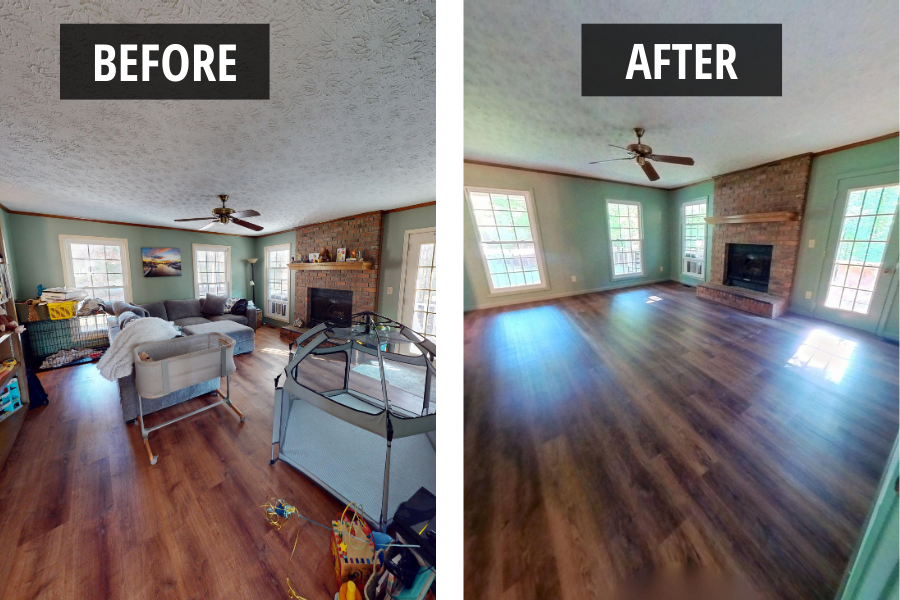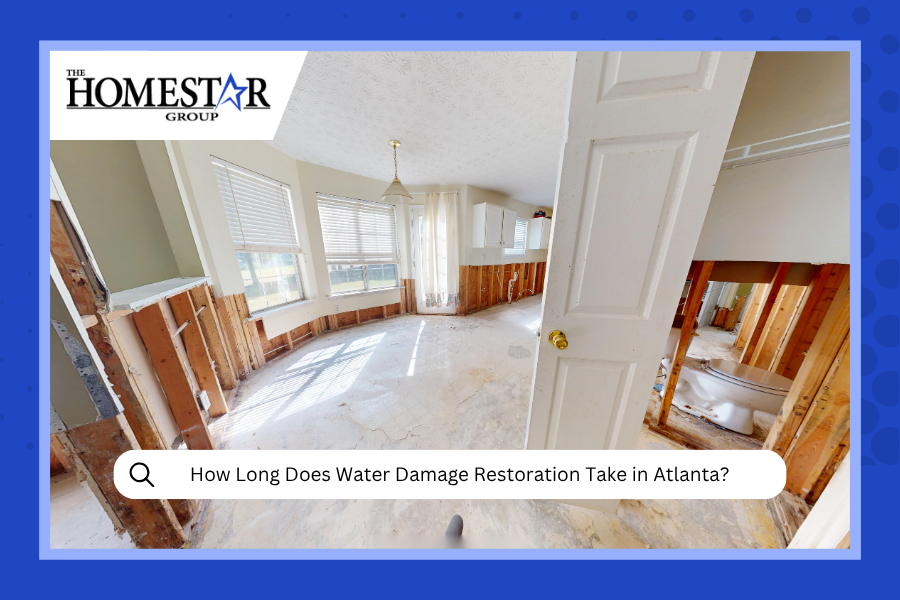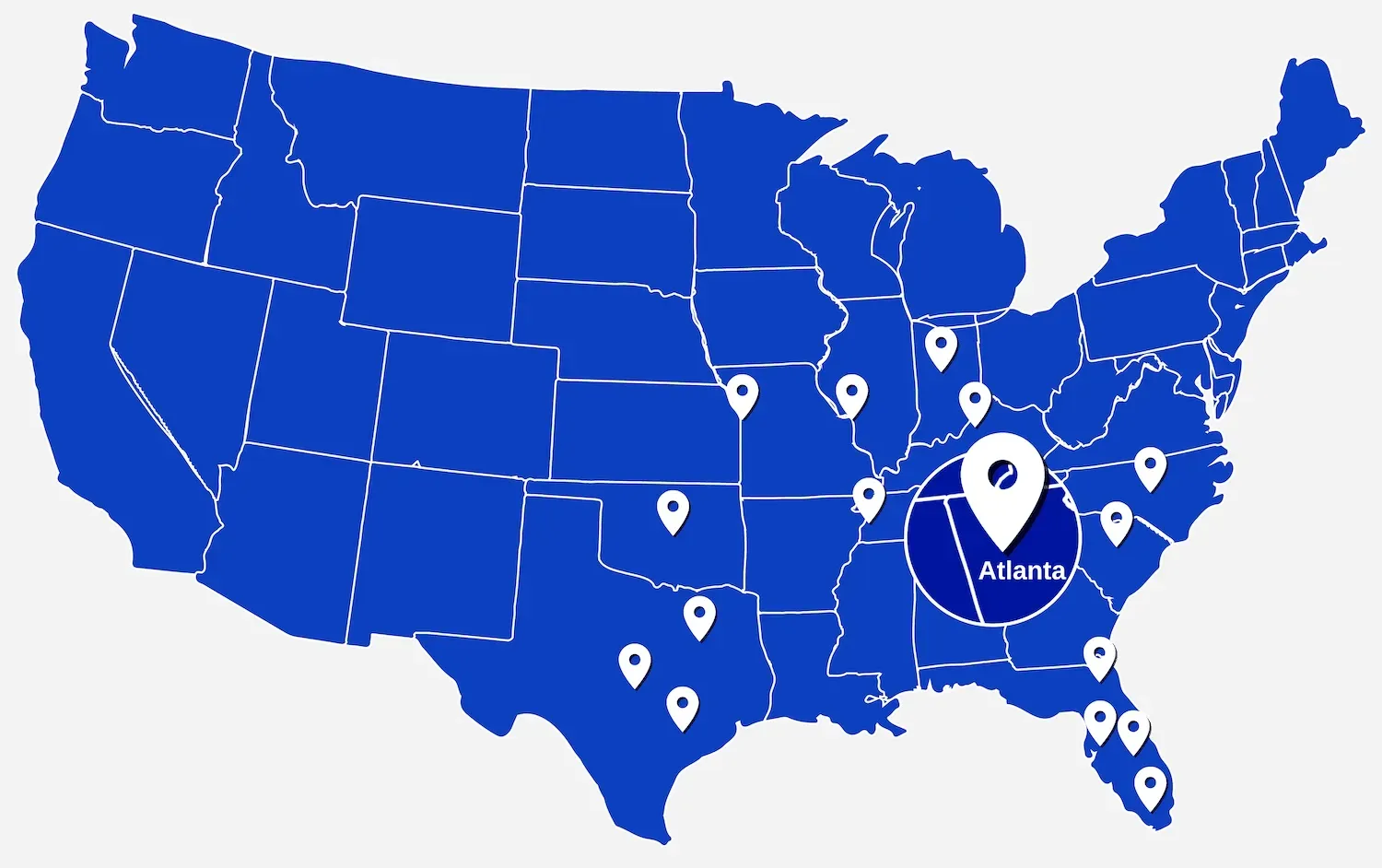
Can You Stay in Your Home During Water Damage Restoration?
When water damage strikes your Atlanta home, the first question on your mind isn't usually "Where am I going to sleep tonight?" But maybe it should be. Whether you're dealing with a burst pipe in your bathroom or water damage from a leaky roof , figuring out if you can stay put during restoration is more complicated than you might think.
The short answer? It depends on several factors, and honestly, we wish it were more straightforward. At The Homestar Group, we've seen everything from minor household appliance leaks that barely disrupt your morning routine to major floods that turn homes into construction zones. Let's walk through what really matters when making this decision.

When It's Usually Safe to Stay Home
Minor Water Damage Scenarios
If you're dealing with water damage that's contained to one area and doesn't affect essential systems, staying home is often possible. Think small bathroom leaks, isolated kitchen sink issues, or minor roof leaks that haven't spread far.
Stay-at-Home Checklist:
- Damage limited to one room or area
- No electrical hazards present
- HVAC system functioning normally
- Clean water source (not sewage or contaminated water)
- Adequate ventilation available
- No significant structural concerns
Need a Professional Assessment?
Unsure about the severity of your water damage? Our IIRC-certified technicians can evaluate your situation and help you make the best decision for your family's safety and comfort.
Get Your Free 24-Hour AssessmentLiving Around the Work
When you can stay home, expect some adjustments to your daily routine. We're not going to sugarcoat it - having restoration equipment running isn't exactly like having houseguests. Industrial dehumidifiers and air movers are loud, and they need to run continuously to do their job effectively.
Most homeowners tell us the noise is manageable during the day, but sleeping can be tricky. If the damage is in a bedroom or nearby area, you might find yourself camping out in the living room for a few nights.
When You Should Consider Temporary Relocation
Safety Comes First
Some situations make staying home unsafe or impractical. Sewage backups are an automatic "pack your bags" scenario - the health risks are just too serious. Similarly, when water damage affects multiple floors or your home's electrical systems, temporary relocation becomes the smart choice.
Understanding the early warning signs of water damage can help you assess the severity of your situation more accurately.
🚨 Safety Red Flags: When to Leave Immediately
| Hazard Type | Why It's Dangerous | Action Required |
|---|---|---|
| Sewage/Contaminated Water | Health risks from bacteria and pathogens | Evacuate immediately |
| Electrical Systems Affected | Risk of shock or electrocution | Leave until power is safely restored |
| Structural Damage | Risk of collapse or injury | Evacuate until structural assessment |
| HVAC System Contaminated | Spreads contaminants throughout home | Relocate during cleaning/replacement |
| Visible Mold Growth | Health risks, especially respiratory | Leave during remediation process |
Extensive Damage Considerations
When water damage is widespread, the restoration process becomes more intensive. We might need to remove flooring, cut out sections of drywall, or set up plastic barriers that essentially divide your home into zones. While it's technically possible to live around this work, it's often more stressful than helpful.
Think about it this way: trying to maintain normal life while half your house is under construction is like trying to cook dinner while someone's renovating your kitchen. Doable? Maybe. Pleasant? Probably not.
What Professional Restoration Actually Involves
Understanding the restoration process helps you make better decisions about staying or going. Water damage restoration isn't just about drying things out - though that's certainly a big part of it.
The Equipment Reality

Professional water extraction and drying requires serious equipment. We're talking industrial-grade dehumidifiers, air movers, and sometimes specialized heating systems. These machines are effective but they're not quiet, and they use a lot of electricity.
The drying process typically takes 3-7 days, depending on the extent of damage and materials involved. Different categories of water damage require different approaches, which affects both timeline and disruption level. Learning about common water damage prevention tips can help you avoid future situations where this decision becomes necessary.
Daily Disruption Levels
What to Expect During Restoration:
- Constant equipment noise (think loud fan mixed with a dehumidifier)
- Technicians checking equipment and moisture levels daily
- Temporary loss of use for affected areas
- Plastic sheeting and barriers in some areas
- Unusual humidity levels throughout your home
Most of our clients adapt to the noise within a day or two, but everyone's tolerance is different. If you work from home or have young children who nap during the day, the disruption might be more challenging.
Making the Decision: Stay or Go?
Factors to Consider
Your decision should balance safety, comfort, and practicality. Here's how we typically advise homeowners to think through their options:
Safety factors: If there's any question about safety - electrical issues, structural concerns, contamination - err on the side of caution and find temporary housing.
Comfort factors: Consider your family's needs. Do you have elderly relatives staying with you? Young children? Health conditions that make noise or air quality issues more problematic?
Practical factors: Think about your daily routine. Can you function with limited access to certain areas? Do you have alternative spaces to use?
Questions to Ask Your Restoration Team
Don't hesitate to get specific with your restoration professionals. According to the EPA's guidelines on water damage , communication between homeowners and restoration teams is crucial for successful outcomes.
Key Questions for Your Restoration Team:
- What specific safety concerns exist in my situation?
- What's the expected timeline and daily schedule?
- Which areas will be inaccessible and for how long?
- What are the expected equipment placement and noise levels?
- Are there any air quality considerations I should know about?
Alternative Housing Options When You Need Them
Insurance Coverage for Temporary Housing
Most homeowners' insurance policies include coverage for "additional living expenses" when your home becomes temporarily uninhabitable due to covered damage. This can include hotel costs, temporary rental expenses, and even pet boarding if needed.
The key word here is "uninhabitable." Insurance companies have specific criteria for this, so document everything and work closely with your restoration team to understand what qualifies.
Local Temporary Housing
In the Atlanta area, you have several options for temporary housing, from extended-stay hotels to short-term rental properties. Many of our clients find that staying close to home makes the process less disruptive, especially when they need to coordinate with restoration teams or handle insurance matters.
If you're dealing with water damage in Conyers, GA or the surrounding Rockdale County area, having local restoration expertise makes a significant difference in managing both the technical and logistical aspects of your situation.
Working with Your Restoration Team
Communication is Everything
The best restoration experiences happen when homeowners and restoration teams communicate openly. Don't assume we know your family's specific needs - tell us about them. If someone in your household has asthma, works night shifts, or has mobility limitations, share that information upfront.
We've learned over our 15+ years in Atlanta that every family situation is different. What works for one household might be completely wrong for another, and we want to help you make the best decision for your specific circumstances.
Daily Check-ins and Updates
Expect daily contact with your restoration team, whether you stay home or relocate temporarily. We monitor moisture levels, adjust equipment as needed, and provide updates on progress. This isn't just about the technical work - it's about keeping you informed so you can plan accordingly.
Ready to Start Your Restoration Process?
Every water damage situation is unique, and so is every family's needs during the restoration process. Let our experienced team help you create a restoration plan that works for your specific situation.
Contact The Homestar Group Today



